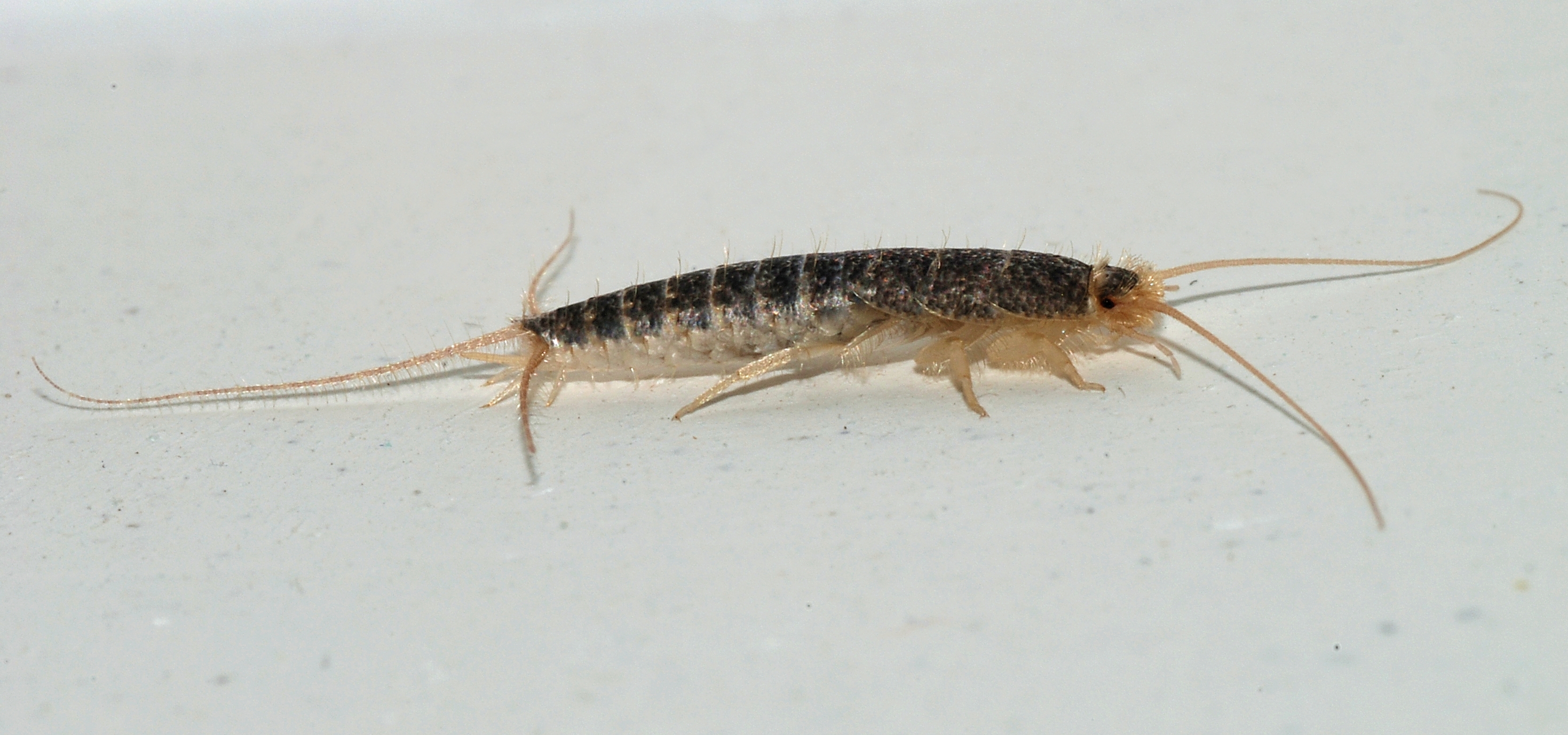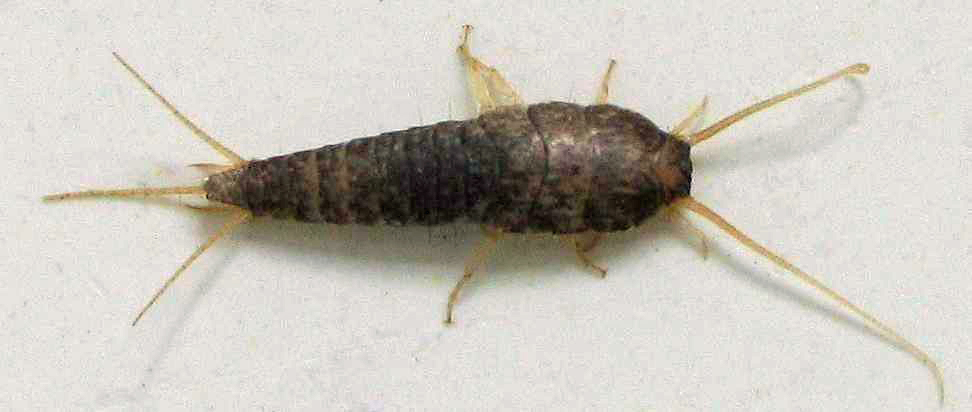|
Lepidotrix
''Lepidotrix'' is an extinct genus of wingless insect belonging to Zygentoma (silverfish and allies) in the family Lepidotrichidae. There is one described species in ''Lepidotrix'', ''L. piliferum/pillifera''. It is known from specimens found in Eocene aged Baltic amber and Rovno amber. The genus lacks Ocelli, occelli. Its relationship with the extant genus ''Tricholepidion,'' which has historically been placed in the same family, is disputed, with some studies finding the two taxa to not be closely related, with ''Tricholepidion'' being placed in its own family instead. While often spelled ''Lepidothrix'' in historic literature, this is homonymous with Lepidothrix, a genus of birds, and ''Lepidotrix'' was the spelling used in the original publication. References Monotypic insect genera, † Articles created by Qbugbot {{Zygentoma-stub ... [...More Info...] [...Related Items...] OR: [Wikipedia] [Google] [Baidu] |
Lepidotrichidae
Lepidotrichidae is a family of basal insects belonging to the order Zygentoma ( silverfish and allies) The family contains the extinct '' Lepidotrix'', known from specimens preserved in Eocene The Eocene ( ) Epoch is a geological epoch that lasted from about 56 to 33.9 million years ago (mya). It is the second epoch of the Paleogene Period in the modern Cenozoic Era. The name ''Eocene'' comes from the Ancient Greek (''ēṓs'', " ... aged European amber. The extant genus '' Tricholepidion'', which contains a single species, '' Tricholepidion gertschi'' from western North America, has also been typically considered a member of the family. However, some more recent research has suggested that the two genera are not particularly closely related, and ''Tricholepidion'' should instead be assigned to its own family Tricholepidiidae. References External linksLepidotrichidae.Integrated Taxonomic Information System (ITIS). Insect families Taxa named by Filippo Silvestri ... [...More Info...] [...Related Items...] OR: [Wikipedia] [Google] [Baidu] |
Lepidothrix
''Lepidothrix'' is a genus of passerine birds in the manakin family Pipridae. Birds in the genus are predominantly found in South America, but one species, the velvety manakin, also ranges into Central America. The females of this genus have green plumage with yellow bellies, as do some of the males. The remaining males have black plumage with white or blue crowns. Some also have yellow bellies or blue rumps.Snow, D. W. (2004). Family Pipridae (Manakins). Pp. 110-169 in: del Hoyo, J., Elliott, A., & Christie, D. A. eds (2004). ''Handbook of the Birds of the World.'' Vol. 9. Cotingas to Pipits and Wagtails. Lynx Edicions, Barcelona. Taxonomy The genus ''Lepidothrix'' was introduced by the French naturalist Charles Lucien Bonaparte in 1854. The type species was subsequently designated as the blue-capped manakin. The name ''Lepidothrix'' combines the Ancient Greek words λεπις ''lepis'', λεπιδος ''lepidos'' "scale, flake" and θριξ ''thrix'', τριχος ''trikhos'' ... [...More Info...] [...Related Items...] OR: [Wikipedia] [Google] [Baidu] |
Zygentoma
Zygentoma are an order in the class Insecta, and consist of about 550 known species. The Zygentoma include the so-called silverfish or fishmoths, and the firebrats. A conspicuous feature of the order are the three long caudal filaments. The two lateral filaments are cerci, and the medial one is an epiproct or ''appendix dorsalis''. In this they resemble the Archaeognatha, although the cerci of Zygentoma, unlike in the latter order, are nearly as long as the epiproct. Until the late twentieth century the Zygentoma were regarded as a suborder of the Thysanura, until it was recognized that the order Thysanura was paraphyletic, thus raising the two suborders to the status of independent monophyletic orders, with Archaeognatha as sister group to the Dicondylia, including the Zygentoma. Etymology The name "Zygentoma" is derived from the Greek ('), in context meaning "yoke" or "bridge"; and ('), "insects", literally "cut into" because of the segmented anatomy of typical insec ... [...More Info...] [...Related Items...] OR: [Wikipedia] [Google] [Baidu] |
Tricholepidion
''Tricholepidion'' is a genus of wingless insect belonging to Zygentoma ( silverfish and allies), with only a single described species ''T. gertschi,'' native to the northern coast of California in Western North America. It lives under dead bark and in rotting wood of conifers in mesophytic forests. It is alternatively considered the only living member of the family Lepidotrichidae, which also includes ''Lepidotrix'' from Eocene aged European amber, or the only member of the family Tricholepidiidae. The taxonomic position of ''Tricholepidion'' is uncertain, in some molecular phylogenetics studies it has been recovered as less closely related to flying insects (Pterygota) than the rest of Zygentoma is, rendering Zygentoma paraphyletic. Each compound eye contains ~40 ommatidia, and they have three ocelli. Scales on the body are absent. Unlike Archaeognatha The Archaeognatha are an order of apterygotes, known by various common names such as jumping bristletails. Among extant i ... [...More Info...] [...Related Items...] OR: [Wikipedia] [Google] [Baidu] |
Silverfish
The silverfish (''Lepisma saccharinum'') is a species of small, primitive, wingless insect in the order Zygentoma (formerly Thysanura). Its common name derives from the insect's silvery light grey colour, combined with the fish-like appearance of its movements. The scientific name (''L. saccharinum'') indicates that the silverfish's diet consists of carbohydrates such as sugar or starches. While the common name ''silverfish'' is used throughout the global literature to refer to various species of Zygentoma, the Entomological Society of America restricts use of the term solely for ''Lepisma saccharinum''. Description The silverfish is a nocturnal insect typically long. Its abdomen tapers at the end, giving it a fish-like appearance. The newly hatched are whitish, but develop a greyish hue and metallic shine as they get older. It has two long cerci and one terminal filament at the tip of the abdomen between the cerci. It also has two small compound eyes, although other me ... [...More Info...] [...Related Items...] OR: [Wikipedia] [Google] [Baidu] |
Eocene
The Eocene ( ) Epoch is a geological epoch that lasted from about 56 to 33.9 million years ago (mya). It is the second epoch of the Paleogene Period in the modern Cenozoic Era. The name ''Eocene'' comes from the Ancient Greek (''ēṓs'', " dawn") and (''kainós'', "new") and refers to the "dawn" of modern ('new') fauna that appeared during the epoch. The Eocene spans the time from the end of the Paleocene Epoch to the beginning of the Oligocene Epoch. The start of the Eocene is marked by a brief period in which the concentration of the carbon isotope 13C in the atmosphere was exceptionally low in comparison with the more common isotope 12C. The end is set at a major extinction event called the ''Grande Coupure'' (the "Great Break" in continuity) or the Eocene–Oligocene extinction event, which may be related to the impact of one or more large bolides in Siberia and in what is now Chesapeake Bay. As with other geologic periods, the strata that define the start and ... [...More Info...] [...Related Items...] OR: [Wikipedia] [Google] [Baidu] |
Baltic Amber
The Baltic region is home to the largest known deposit of amber, called Baltic amber or succinite. It was produced sometime during the Eocene epoch, but exactly when is controversial. It has been estimated that these forests created more than 100,000 tons of amber. Today, more than 90% of the world's amber comes from Kaliningrad Oblast of Russia. It is a major source of income for the region; the local Kaliningrad Amber Combine extracted 250 tonnes of it in 2014, 400 tonnes in 2015. "Baltic amber" was formerly thought to include amber from the Bitterfeld brown coal mines in Saxony (Eastern Germany). Bitterfeld amber was previously believed to be only 20–22 million years old (Miocene), but a comparison of the animal inclusions in 2003 suggested that it was possibly Baltic amber that was redeposited in a Miocene deposit. Further study of insect taxa in the ambers has shown Bitterfeld amber to be from the same forest as the Baltic amber forest, but separately deposited from a ... [...More Info...] [...Related Items...] OR: [Wikipedia] [Google] [Baidu] |
Rovno Amber
Rivne amber, occasionally called Ukrainian amber, is amber found in the Rivne Oblast and surrounding regions of Ukraine and Belarus. The amber is dated between Late Eocene and Early Miocene, and suggested to be contemporaneous to Baltic amber. Major exploration and mining of the amber did not start until the 1990s. Geology The late Eocene amber is hosted in the Mezhigorje Formation, with early reports of occurrences in the underlying Obukhov Formation as well. The formations are found along the northwestern margin of the Ukrainian Crystalline Shield exposed in the Rivne region of the Ukraine and across the border near Rechitsa in the Gomel Region of Belarus. The granite basement rock was overlain by sandy to clayey deposits that were host to alluvial amber. The two formations total between in thickness, both containing interbeds or mixtures of brown coals and carbonized vegetation. Both formations are sandy to clayey in texture, with the Obukhov having more clayey glauc ... [...More Info...] [...Related Items...] OR: [Wikipedia] [Google] [Baidu] |
Ocelli
A simple eye (sometimes called a pigment pit) refers to a form of eye or an optical arrangement composed of a single lens and without an elaborate retina such as occurs in most vertebrates. In this sense "simple eye" is distinct from a multi-lensed " compound eye", and is not necessarily at all simple in the usual sense of the word. The structure of an animal's eye is determined by the environment in which it lives, and the behavioural tasks it must fulfill to survive. Arthropods differ widely in the habitats in which they live, as well as their visual requirements for finding food or conspecifics, and avoiding predators. Consequently, an enormous variety of eye types are found in arthropods. They possess a wide variety of novel solutions to overcome visual problems or limitations. Use of the term ''simple eye'' is flexible, and must be interpreted in proper context; for example, the eyes of humans and of other large animals such as most cephalopods, are '' camera eyes'' and ... [...More Info...] [...Related Items...] OR: [Wikipedia] [Google] [Baidu] |
Homonymous
In linguistics, homonyms are words which are homographs (words that share the same spelling, regardless of pronunciation), or homophones ( equivocal words, that share the same pronunciation, regardless of spelling), or both. Using this definition, the words ''row'' (propel with oars), ''row'' (a linear arrangement) and ''row'' (an argument) are homonyms because they are homographs (though only the first two are homophones): so are the words ''see'' (vision) and ''sea'' (body of water), because they are homophones (though not homographs). A more restrictive and technical definition requires that homonyms be simultaneously homographs ''and'' homophoneshomonym ''Random House Unabridged Dictionary'' at dictionary.com – that is to say they have identical spelling ''and'' pronunciation, but with different meanings. Examples are the pair ''stalk' ... [...More Info...] [...Related Items...] OR: [Wikipedia] [Google] [Baidu] |
Monotypic Insect Genera
In biology, a monotypic taxon is a taxonomic group (taxon) that contains only one immediately subordinate taxon. A monotypic species is one that does not include subspecies or smaller, infraspecific taxa. In the case of genera, the term "unispecific" or "monospecific" is sometimes preferred. In botanical nomenclature, a monotypic genus is a genus in the special case where a genus and a single species are simultaneously described. In contrast, an oligotypic taxon contains more than one but only a very few subordinate taxa. Examples Just as the term ''monotypic'' is used to describe a taxon including only one subdivision, the contained taxon can also be referred to as monotypic within the higher-level taxon, e.g. a genus monotypic within a family. Some examples of monotypic groups are: Plants * In the order Amborellales, there is only one family, Amborellaceae and there is only one genus, '' Amborella'', and in this genus there is only one species, namely ''Amborella trichopoda ... [...More Info...] [...Related Items...] OR: [Wikipedia] [Google] [Baidu] |





